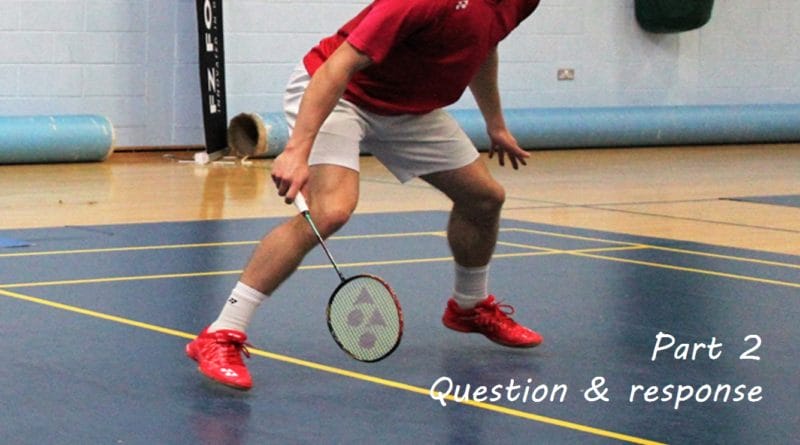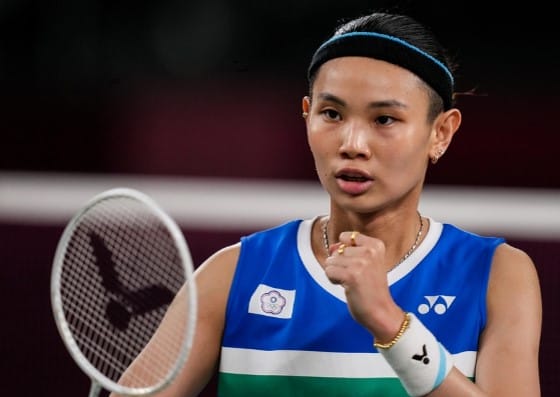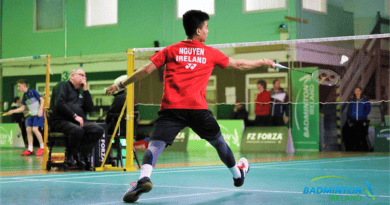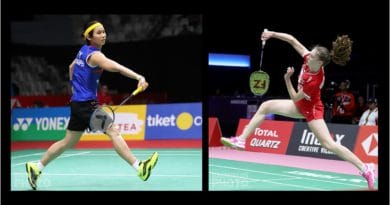The Badminton Split Step
I’ve taken the ‘Split step’ challenge – here is my reply
If you want to go back and review the questions click here or the image below
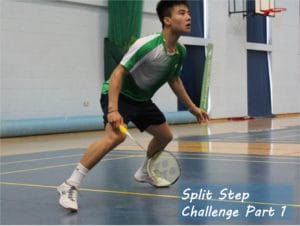
I wonder if you will agree with me, or maybe there are aspects where we disagree 🙂
When I was first asked these questions over 20 years ago, it took me a few minutes to answer, afterwards I realised how wrong I was. I needed to change my coaching of the is movement
I had been watching good players, observing but not realising what they did and when they did it
– – – – – – – – – – – – – – – – – –
There are 3 videos below for you take a look at
If you are like me, then maybe you want to look at good players first before considering my reply.
I recommend that you initially just look at the player and their movements. The movements they make before the opponent strikes the shuttle and then what happens after the opponent’ strikes the shuttle.
I’ hadn’t been coaching in an effective/ efficient way
Before I was asked these questions I’d been coaching the movement using methods that seemed appropriate (to me as a coach) but didn’t assist the players in automating the movement.
Certainly, my coaching didn’t relate to real game stimuli, the things players see, the replies that they anticipate.
I create practices that included verbal coach cues (clapping, shouting) and I used shadow practices where the player decided when and how to prepare and move. The players seemed to be successful at the practice.
However, I had no idea what to say to Questions 4 and 5, they soon became the most impactful on my coaching
If you want to know more then sign up for the newsletter and look out for an email giving you advanced notification of a post called “Split step, Stances and much more”
Coaching the split-step does not mean shouting ‘split’
and you don’t always split in the direction you eventually move
– – – – – – – – – – – – – – – –
Q1. Is the split-step an anticipatory or reflective movement?
The split step should be thought of as an anticipatory movement prior to the opponent striking the shuttle
You must split and adopt a Stance (choose any of 3) just before the shuttle is struck and in a direction outline in Question 2.
Performing the movement once the direction of movement is known requires the shuttle to have been struck, this will result in a slower movement to the shuttle, if you reach it.
Players who anticipate and split as discussed below will have an advantage
– – – – – – – – – – – – – – – –
Q2. In which direction would I person generally split-step?
The direction of the split-step should be in accordance with either of these statements
and happend before the opponent strikes the shuttle
Perform the movement to prepare to move to one of the following
… The opponents most likely reply
… The shuttle that will hit your court floor 1st
This does mean that the position after the split may be seen as ‘wrong’ (an error) as the shuttle is then struck in another direction to that anticipated.
This is not an error and in fact, it happens far more than you may think with players, including World Class players.
It is not an error, it was an anticipatory move that prepared for the most likely reply.
Therefore you cannot practice splitting in the direction you wish to move and then always move in that direction
What did you see in this short video?
- Look at all the movements between striking the shuttle
- TTY always ‘prepares for something’ by adopting a stance
- Hower the movement afterwards is not always as she ‘anticipated’
- This is not an issue as is correct 🙂
- The movement was her choice and completely correct even though she didn’t split and move in that direction
– – – – – – – – – – – – – – – –
Q3. What initiates the timing of the movement?
The timing is set by the players and their perception of the opponent, the situation, their expectations
The movement will be just before the opponent strikes the shuttle
A general position (stance) may already have been adopted (say after high serving) but the physical loading will take place just before the player thinks that the shuttle will be struck
Watch the spectacular movement skills of Tai Tzu Ying
-
- How many different Stances can you see?
- All 3 Stances are here in this video. (See Question 4 below)
- How many times does she split into these stances and then move in the direction you would expect
- How many times does she move in a completely different direction to the one you thought she was preparing for?
- Look again and count how many times she splits in one direction and then quickly changes after moving somewhere else
TZY uses Stances to anticipate her next movements
She does all this before the opponents strike the shuttle
– – – – – – – – – – – – – – – –
Q4. What other court movements should the split-step be linked (very closely) with?
Stances, as they are closely combined with the movement
I believe that they are 3 Stances used throughout all preparation positions
- square (defensive) stance
- racket foot forward (attacking)
- non-racket foot forward (attacking) stance
These stances should be thought of as Anticipatory – selected before the opponent strikes the shuttle, not afterwards. The adoption, ie movement into the stance is prior to the shuttle being struck by the opponent. This is combined with a ‘split-step pretension’ movement.
The movement should be ‘timed’ to adopt the stance as the opponent prepares for their stroke. Before they strike it!
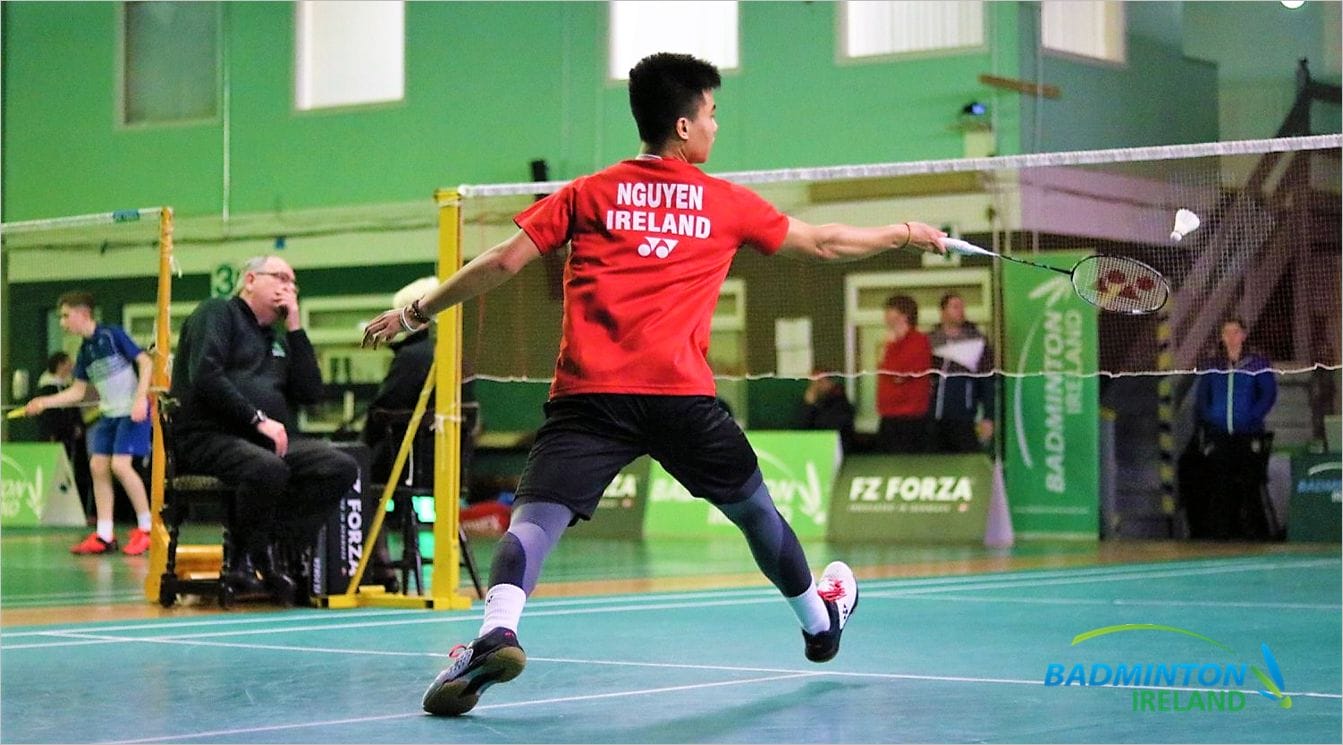
The general rules of “shuttle above or below the net” should be followed in the majority of situations.
If you click on the image and read point number 4 it will give you some more background information.
Be aware that sometimes the adoption of a particular stance in some circumstances may not appear appropriate for the resulting opponent stroke but was initially appropriate for the anticipated return.
Look out for a future post on Stances, How and When to coach them
– – – – – – – – – – – – – – – –
Q5. What are the important practice points a coach must realise when coaching the split?
Here are 8 points that you could consider
If you prefer a checklist to choose from then look at the bottom of this post under the heading Extra Bits
- Practice this movement without any verbal cues from the coach
- Set up practices that require a change of stances followed by court movements
- Shadow practice is only part of the practice (if at all) as it misses the stimuli of the opponent’s preparation and striking of the shuttle
- Create practices that allow for the movement as if was ‘timed’ as in a real match, hit uses, anticipate, move
- Do not demand that players split in the direction of the eventual movement, it cannot happen ‘correctly’ all the time!
- Do not remind players of their Split Movements once they are partly established. Please don’t shout “Split !”
- Create practices that allow for and demand that lots of Stances/Splits are used in real game conditions
- Coach players in a style so that players forget they were ever coached to do the Split! 🙂 (why do you think this is important?)
My request to all coaches is that you don’t coach the split in the same way as other movements
Don’t specifically talk about it, talk about Stances instead
Don’t set practices that specifically target it, have it used in all movement practices
Practices with a Certainty of Stances and Uncertainty of opponent shot choice
– – – – – – – – – – – – – – – –
Q6. Have any of these questions changed your view of coaching the split-step?
If so by now much?
When I was first introduced to the Badminton Split Step (it was called a Pretension movement then) it was through the use of Stances (preparation to move stances) and not as an individual movement. I was encouraged to first ‘teach’ it through Wallwork practices.
Subsequently, I was introduced to Player Start practices that nearly always allowed for (demanded) the use of stances and a ‘timed’ split-step movement.
These 2 ideas radically changed my view on this unique movement. It would be fair to say that my view and thoughts completely changed during the time I learnt more about Stances and the split-Step
In time I realised 3 things
- I had not been teaching and importantly allowing for both Stances and the movement into the Stance
- I had no idea how to do no.1
- I had more to learn how to coach without the players actually knowing what they were doing. How was I going to avoid paralysis by analysis
Thank you once again for coming to this site and thank you for your motivation to take this challenge
I hope that you will consider sending some feedback contact@badmintonandy.com
– – – – – – – – – – – – – – – –
Extra Bits
Split Step Practice Problems
Many other strokes have several steps or layers of development. A good example is an overhead Backhand Clear. This stroke is made up of several complex movements that are required to be sequenced and timed.
There are also several key technical aspects for a BH Clear that need to be mastered. Many of these key skills can be developed as a progression.
A. So what are the layered steps to coaching a perfect badminton split-step?
B. How can the ‘Split Step’ be ‘taught’ without the players’ focus of attention being on it?
C. How to avoid- Paralysis By Analysis and ‘Movement freeze/lumpy/late’. This is a very important consideration.
Q5 The Practice checklist se from
What would you include or not include when coaching the split?
Choose which elements/factors you think need to be present in a practice that encourages and develops a split
- Shuttles being hit
- On court within lines
- Opponent striking
- Rackets in hands
- Shadow only
- Player self timings
- Coach timings/commands
- Player decisions when starting with the shuttle
- Opponent choices when receiving the feed
- Short 3 -5 shot rallies
- Coach single shot feeding
- Verbal cues from coach or partner off court
- Game like choices
- Certainty to reduce stress
- Uncertainty that increases stress
- Predefined simple movements in the direction of the split

